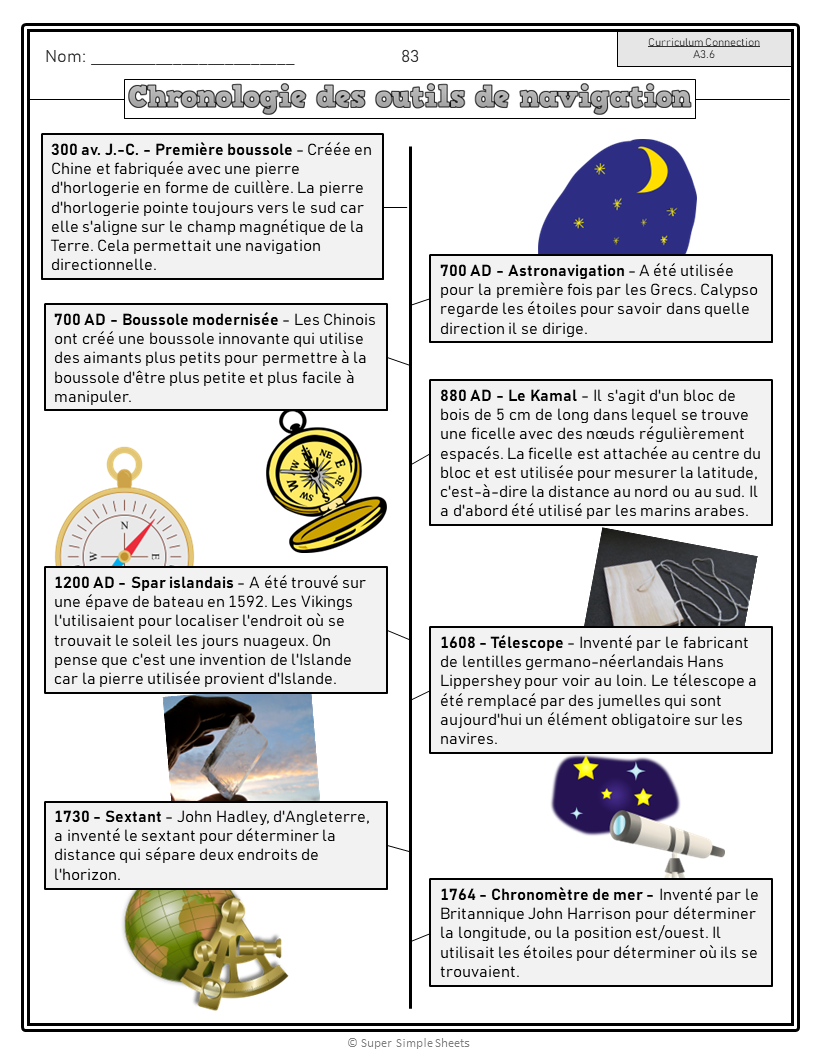Ontario - Grade 4 - Social Studies - FULL YEAR BUNDLE - FRENCH VERSION
Ontario - Grade 4 - Social Studies - FULL YEAR BUNDLE - FRENCH VERSION
Interested in a bundle? Shop below instead!
Couldn't load pickup availability
FRENCH VERSION! PERFECT FOR FRENCH IMMERSION
NEWLY UPDATED IN 2022! GOOGLE AND PDF VERSIONS BOTH INCLUDED!
FULL YEAR BUNDLE! With over 300 pages included, this product covers all the expectations in the Grade 4 Social Studies curriculum.
Most importantly, we have made cross-curriculum connections to the grade 4 language program. Students will practice reading comprehension strategies (making connections, visualizing, inferencing, summarizing and questioning) as they work through this unit.
Grade 4 – Ontario Social Studies Curriculum – Early Societies to 1500 CE. This product was created to cover the expectations in the Ontario Social Studies Grade 4 curriculum – Strand A: Heritage and Identity: Early Societies to 1500 CE.
Check out the preview of this unit to learn more about how it can benefit your students in social studies and language!
Some of the concepts that are covered:
- What is a civilization?
- First civilization (society) – Sumer
- Sumerian Cuneiform – Writing using the Sumerian alphabet
- Mesopotamia – Living between two rivers – map and reading/questions
- Daily life in early societies – examining historical pictures/artifacts
- Inca, Andean, Mayan, Aztec – culture, daily life, governments, and social structure
- Inuit and First Nations (Algonkin, Haudenosaunee) – culture, daily life, governance, social structure)
- Ancient Egypt – architecture (pyramids), daily life, expanding knowledge
- Egyptian Hieroglyphs – writing using the Egyptian alphabet
- Maps of Ancient Egypt
- Rise of Rome – How geography shaped where Rome was founded (peninsula)
- Government of Rome
- Julius Caesar
- Fall of the Roman Empire – conflict between societies
- Children in early societies
- China – Advanced Society – technological advances (printing press, navigational tools)
- Zheng He – Cartography
- Navigational tools – timeline of inventions
- Silk Road – One Road, One Belt
- Religion around the world
- Feudalism – King, Noble, Knights, and Serfs
- Feudalism in Europe vs Japan
- Caste System – Social Classes in India
- Unit test
- Answer pages for all activities
Grade 4 – Ontario Social Studies Curriculum – Political and Physical Regions of Canada. This product was created to cover the expectations in the Ontario Social Studies Grade 4 curriculum – Strand B: People and Environments: Political and Physical Regions of Canada.
Check out the preview of this unit to learn more about how it can benefit your students in social studies and language!
Some of the concepts that are covered:
- Provinces and Territories in Canada
- Capital Cities in Canada
- Providing directions using cardinal directions using a map of Canada
- Atlantic Canada – People and Culture
- Central Canada – People and Culture
- Prairie Provinces – People and Culture
- Northern Territories – People and Culture
- West Coast – People and Culture
- Regions of Canada Map
- Location, Landforms, Climate, Vegetation, Economic Activities and Interesting Facts about each region listed below
- Appalachian Mountains, Western Cordillera, Interior Plains, Canadian Shield, Great Lakes-St. Lawrence Lowlands, Hudson Bay Lowlands, and Arctic Lowlands
- Identifying jobs and economic sectors in each region
- Examining pictures of each region
- Rocky Mountain - Profile
- Canada’s Boreal Forest – Profile
- Deforestation and Clear-cutting of the Boreal Forest
- Assignment – Creating Infographic about Deforestation
- Comparing the East Coast to the West Coast – Climate and Populations
- Resource Town in Alberta – Fort McMurray Profile
- Northern Canada and the Northern Way of Life
- Natural Resources in Canada
- Human Activities and their Effect on the Economy
- Economic Sectors – Primary, Secondary, Tertiary, and Quaternary
- Identifying people who work in each sector
- Comparing the work force in Canada by each sector
- Difference between provinces and territories
- Municipalities in Canada
- First Nation Reserves in Canada
- Unit test
- Answer pages for all activities
This is a comprehensive unit that will save you hours of planning! It has been tested and found effective in helping students achieve the learning goals in the social studies curriculum.
Share













